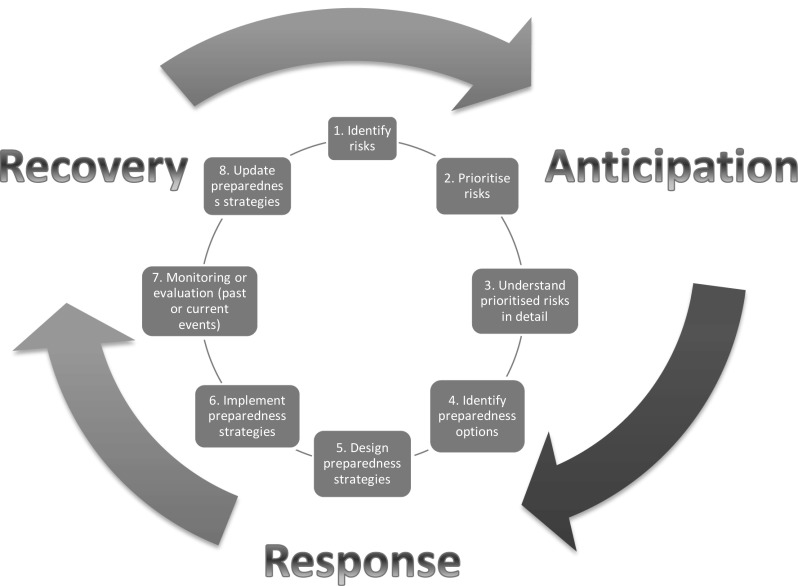This literature review summarises literature that has identified barriers to community engagement in public health emergency (PHE) situations, and actions that can be taken to enable engagement. It highlights that public health emergency situations and the communities they impact vary hugely, and so the effectiveness of any engagement activities are highly contextual. No set practices will be effective for all communities, so the most effective practice is to be sensitive to the context.

Image: 'The Preparedness Cycle', Ramsbottom et al 2017
The paper takes a ‘whole community’ approach, where the term ‘community’ includes all relevant stakeholders. It also makes use of the PHE preparedness cycle (image 1). It identifies five key points that engagement practitioners need to consider to ensure their work is sensitive to the cultural context:
-
Establishing relationships & building trust: Lack of trust from communities towards institutions is a major barrier to effective engagement. To avoid this, it is important to listen to community concerns and priorities and take trust-building measures
-
Mapping existing networks & planning resources: Community mapping can help identify any enablers and barriers to engagement. This is best done by considering all elements of a community from the community members’ perspective
-
Developing cultural competencies: Practitioners should be aware of cultural factors which can influence how information will be received by groups
-
Ensuring two-way communication & community ownership: Communication in emergencies must be two-way, acknowledging the needs and capacities of communities. Communities must also be empowered to take ownership and leading roles in certain engagement activities
-
Engaging throughout & considering vulnerable groups: Communities should be engaged throughout the preparedness cycle, including the anticipation phase, ie before a health emergency occurs. Special attention should be paid to vulnerable groups
Read the full paper here.

This work is licensed under a Creative Commons Attribution 4.0 International License.

Please Sign in (or Register) to view further.